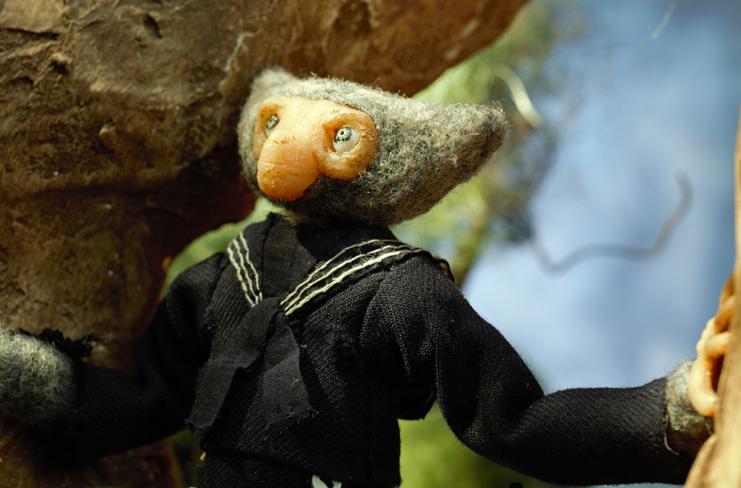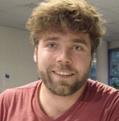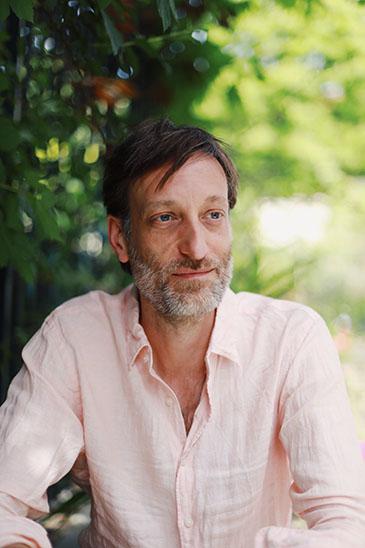Animation

The Animation course is designed for students to acquire personal mastery of the animation techniques - both frame by frame and frame to frame. The department aims to enable students to express themselves in a singular way and to seek innovation.
- analog and digital animation techniques,
- expression through motion,
- basics of cinematic and dramatic language,
- image-sound relationship,
- history of animation and analysis of works,
- drawing,
- morphology,
- mime,
- analog and digital tools.
- Learning the fundamental rules and techniques of animation,
- Learning the elements that will enable students to express themselves in a personal and sensory manner.
- Working on light
- Working on the power of expressiveness in staging.
Creators-Directors
By the end of the course, students should know how to devise and carry out projects they have created, whether on their own or as part of a team. Thus, they should find their place within the highly diversified range of animation: art film, music videos, video game, experimental or expanded cinema, plastic expression… In this ever-changing landscape, the creators-designers must learn how to explore and experiment with new approaches as well as to blaze trails.
The curriculum develops progressively so as to gradually deepen the technical and expressive basics of animation, staging, dramaturgy and storytelling.
The artistic, technical and industrial history of animation is looked at with a critical eye.
Students are introduced to the major techniques of animated film, stop motion, straight ahead animation and of computer-generated imagery. Students also learn to use technical tools, which furthers and deepens the learning of conceptual and artistic practices.
From the 2nd to the 4th year, the classes are organized in such a way as to balance projects and exercises, both individual and collective, so that the students are eventually mature enough to devise and carry out, throughout the 5th year, a personal and innovative Grand Projet.
Bachelor’s Degree
The 2nd year is dedicated to learning the basics of animation:
Students will become acquainted with the frame-by-frame composition of time, space and movement and thus acquire the means to express themselves through animation techniques. Students will also tackle cinematic storytelling and thus learn the techniques of screenwriting, storytelling and of shooting scripts.
The classes are divided into two complementary and inseparable parts:
In the 3rd year, all technical and conceptual skills are redeveloped and reworked, so that students acquire a sensory and expressive autonomy in their practice of animation:
the techniques of 2D and 3D animated film, of straight ahead animation and of expression through motion are also re-examined, through more complex exercises.
The techniques and practices of storytelling, dramaturgy and shooting script are explored in greater depth through the making of classic or expanded film productions.
Master’s Degree
Both years of the Master’s degree are dedicated to exploring practices, learnings and theoretical knowledge with greater depth through the research thesis and to developing personal expression in different contexts.
The 4th year is structured around several successive projects:
In the first semester, students create a short and accomplished documentary-like animated production. At the same time, the digital skills course is two-fold:
International student exchanges take place in the 4th year.
In the second semester, students carry out short film projects, which are particularly based on musical compositions made in partnership with the Conservatoire national supérieur de musique et de danse de Paris. They allow students to absorb the techniques of procedural animation and of compositing. The techniques choices made for those productions are linked to the student’s personal creative approach.
Students may also follow the “Designing movements and interaction” course, which both Graphic Design (lien) and Animation (lien) students can follow. The lesson preparing students for film directing has a two-fold objective: for students to picture themselves professionally making a film, taking into account any economic constraint, and for them to start thinking about their Grand Project (5th year).
The 5th year mainly focuses on devising, writing, making and directing the Grand Projet, the stages of which are done and validated throughout the year.
The 1st semester includes an introductory course to research methodology. Project communications are planned throughout the year.
Students are encouraged to question the current forms of animation and to invent new ones, while adapting the techniques they use to their project.
Teachers
| Nom | Fonction |
|---|---|
Romain Blanc-Tailleur
Romain Blanc-Tailleur
Après des études de Lettres Modernes à Toulouse et un travail autour du signe en bande dessinée et de l’OULIPO, Romain Blanc-Tailleur intègre l’EnsAD, et s’y spécialise en cinéma d’animation. En parallèle, il se perfectionne au trombone et en composition musicale. Après quelques années comme réalisateur indépendant, Romain devient un membre actif du jeune studio toulousain « La Ménagerie », où il endosse toutes les casquettes : assistant de production, post-producteur, animateur 2D et volume assistant réalisateur, scénariste, compositeur de musique... Aujourd’hui il écrit et réalise des films et des séries d’animation, crée des spectacles autour de l’image animée et compose de la musique pour le cinéma. |
Réalisateur, Compositeur |
François Darrasse
François DarrasseSa vie d’adulte commence par la menuiserie, puis par appétit, intègre pour deux années les beaux-arts de Bourge. Attiré par la pléthorique programmation des cinémas parisiens, il poursuit ces études à l’EnsAD. Après deux années de spécialisation en cinéma d’animation et vidéo, ces activités se partagent entre deux pratiques : plasticien, ( expositions, installations, projections), et technicien en cinéma d’animation, (opérateur, chef opérateur). |
Professeur, consultant, cinéaste |
Marion Lacourt
Marion Lacourt |
Non renseigné |
Sébastien Laudenbach
Sébastien Laudenbach
Sébastien Laudenbach est réalisateur de films d'animation et illustrateur. Il est auteur d'une dizaine de courts métrages et de 3 longs-métrages : La jeune fille sans mains (présenté à Cannes et Prix spécial à Annecy, sort en salle en 2016), Linda veut du poulet ! (co-réalisation avec Chiara Malta, également à Cannes et Annecy) et Cristal (2023). Il remporte plus de 40 prix internationaux dont le César du meilleur long-métrage d’animation et le prix européen du meilleur film Jeune Public. Il conçoit par ailleurs des affiches de films (pour Emmanuel Mouret entre autres) et réalise des génériques et clips (Dominique A, Etienne Daho) et enseigne à l'École des Arts Décoratifs - PSL depuis 2001. Son adaptation de Carmen sortira en salle en 2026. |
Cinéma d'Animation, conception et réalisation; cinéaste |
Serge Verny
Serge VernySerge Verny est enseignant et coordonnateur du secteur Cinéma d'animation à l'École des Arts Déco. -Diplômé en cinéma-animation-vidéo de l’EnsAD Dessinateur, animateur, storyboarder pour : Antenne 2, Télé Hachette, Canal +, CNRS, Ellipse, Nelvana, Les Cartooneurs Associés, Brizzi Films, Disney France Feature Animation, JPL Films, Creamuse , Prima Linea . Il réalise plusieurs films comme auteur : 1989 : Thulé (1989), Pictographe (1991), Phénomènes (1992), "Over The Emerald World". (film d’animation pour salle dynamique, Hanovre- Projet pour le Regenwaldhaus, exposition universelle, 2000). A partir de 1995, il enseigne à l’EnsAD et depuis 2006, il est coordonnateur du secteur Cinéma d’animation . Il poursuit un travail de recherche sur les formats non standard. Publications récentes : |
Cinéaste |
Mémoires
| Étudiant.e.s | Titre du Projet | Année |
|---|